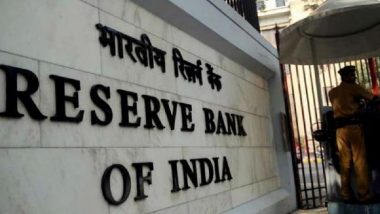New Delhi, August 26: On Monday, the government won and the RBI lost in what turned out to be an attritional war that saw a Governor being scalped. One can argue that the central bank works at the pleasure of the government and the RBI Act says this with great clarity. Mint Street after its board meeting announced that it will transfer a surplus of a little over Rs 1.76 lakh crore to the government.
"The surplus transfer includes Rs 1,23,414 crore in surplus for the year 2018-19 and Rs 52,637 crore of excess provisions identified as per the revised Economic Capital Framework (ECF) adopted at the meeting of the Central Board today," a statement from the central bank said.
Last November, when things reached a flashpoint, RBI Deputy Governor had created a flutter in the dovecotes when he said at the AD Shroff lecture: The RBI is neither an independent nor an autonomous institution. Governments that do not respect central bank's independence will sooner or later incur the wrath of financial markets, ignite economic fire, and come to rue the day they undermined an important regulatory institution.
The RBI Act clearly states: "The Central Government may from time to time give such directions to the bank as it may, after consultation with the Governor of the Bank, consider necessary in the public interest. Subject to any such directions, the general superintendence and direction of the affairs and business of the Bank shall be entrusted to a Central Board of Directors which may exercise all powers and do all acts and things which may be exercised or done by the Bank." Which means that the RBI has to be subservient to the government.
This is over the above the RBI annual dividend that is given to the government. Last financial year, with an interim transfer of Rs 28,000 crore in February this year, the government got a total Rs 68,000 crore from the central bank. The RBI had transferred Rs 40,000 crore to the government in August 2018. This was the highest receipt from RBI in a single financial year for the government, exceeding the Rs 65,896 crore it received in FY16 and Rs 40,659 crore in FY18.
In July, before his abrupt removal as finance secretary, S.C. Garg had said the government expects Rs 90,000 crore as dividend from the RBI in the current fiscal 2019-2020. Differences of opinion over this vexed issue led to RBI Governor Urjit Patel resigning and the Bimal Jalan committee being formed on transfer of surplus. It also saw ex-DEA secretary Shaktikanta Das being sent to RBI Mumbai's 18th Floor corner office. The surplus transfer was finalised in keeping with the recommendations of the same panel, headed by former RBI Governor and later Rajya Sabha member Bimal Jalan.
The RBI central board accepted all the recommendations of the committee, the central board said in its statement. Further it stated: The Committee's recommendations were guided by the fact that the RBI remains the cornerstone for monetary, financial and external stability. Hence, the resilience of the RBI needs to be commensurate with its public policy objectives and must be maintained above the level of peer central banks as would be expected of a central bank of one of the fastest growing large economies of the world.
Based on the RBI's 2017-18 accounts, there are two material components to RBI's reserves: A Contingency Fund of Rs 2.5 lakh crore. A Currency and Gold Revaluation Reserve of Rs 6.91 lakh crore. The central bank's accounts for 2018-19 are due to be released later this week. Some sections in the government have argued that the RBI is holding excess reserves, which should be transferred to a cash strapped government.
A government-RBI face-off saw the creation of a panel of eminents helmed by Bimal Jalan, which also included ex-RBI Deputy Governor Rakesh Mohan, central board members Bharat Doshi and Sudhir Mankad, Economic Affairs Secretary Subhash Chandra Garg and RBI Deputy Governor NS Vishwanathan. Among its mandates was that it would also determine whether the RBI is holding provisions, reserves and buffers in surplus or deficit of said levels, and would propose a suitable profit distribution policy.
The current economic capital framework followed by the RBI is not in public domain. A committee in 1997 had recommended that contingency reserves be maintained at about 12 percent of total assets. At present, these reserves are at about 7 percent, which is much below that level. The government has argued it differently and is looking at the total capital on the RBI's balance sheet, which it believes is excessive.
(The above story first appeared on LatestLY on Aug 26, 2019 10:28 PM IST. For more news and updates on politics, world, sports, entertainment and lifestyle, log on to our website latestly.com).













 Quickly
Quickly


